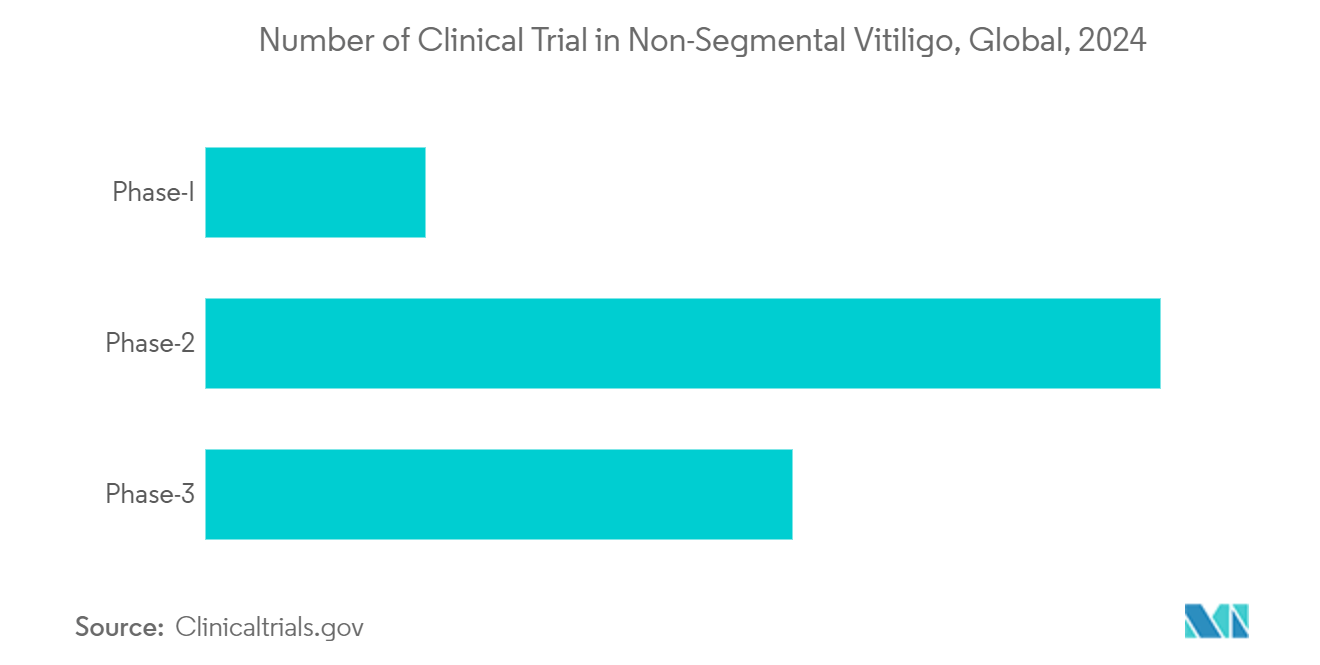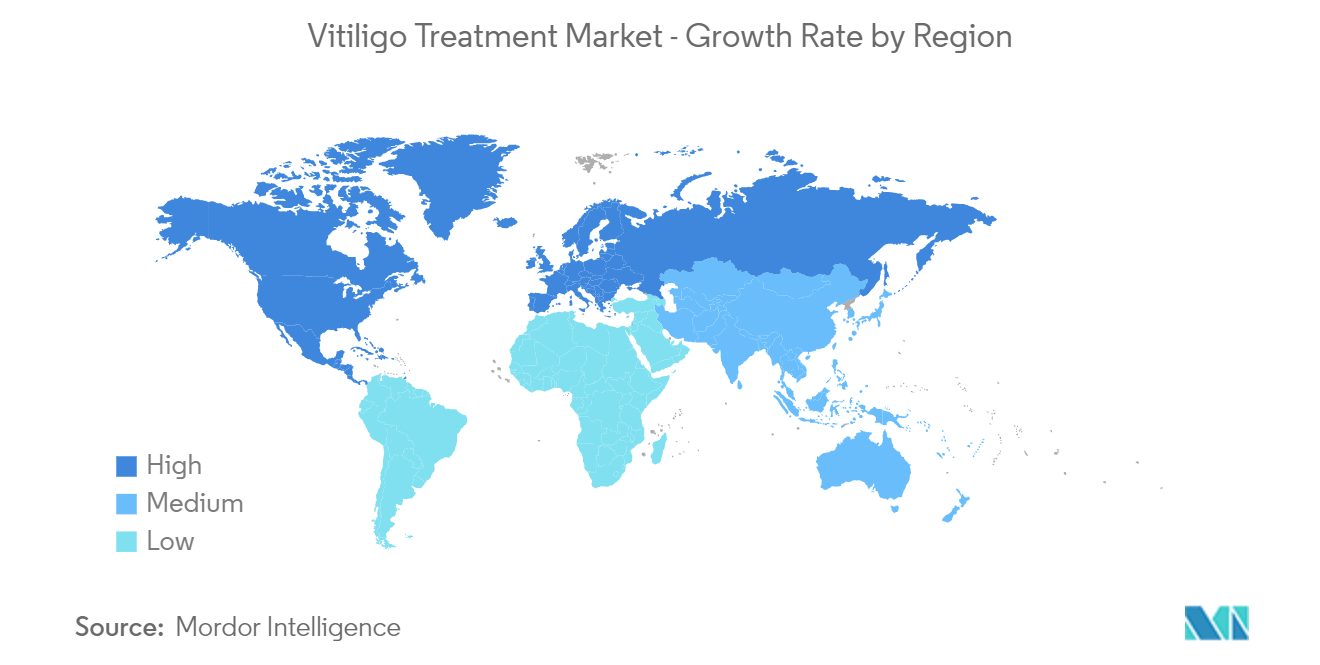Market Trends of Vitiligo Treatment Industry
The Non-segmental Vitiligo Segment is Expected to Witness Significant Growth Over the Forecast Period
Generalized vitiligo, commonly referred to as non-segmental vitiligo, is the predominant type of vitiligo. It is marked by a symmetrical and widespread loss of skin pigmentation in multiple areas of the body. This type of vitiligo affects approximately 90% of those with the condition and is marked by the gradual development of white patches on both sides of the body. The non-segmental vitiligo segment is driven by a range of factors, including increasing prevalence, advancements in treatment options, and heightened awareness about the condition.
Recent advancements in treatment options for non-segmental vitiligo have significantly impacted the segment. Historically, treatment options were limited to topical corticosteroids, phototherapy, and surgical interventions. However, recent developments have introduced new therapies with better efficacy and fewer side effects. For example, the approval of Janus kinase (JAK) inhibitors, such as Incyte Corporation’s Opzelura (ruxolitinib cream) in 2022, provided a novel and effective treatment option. Such new therapies offer targeted approaches that address the underlying autoimmune mechanisms of vitiligo, improving treatment outcomes and expanding the market.
In addition, continuous research and development (R&D) efforts are crucial drivers of the segment. Pharmaceutical companies and research institutions are actively exploring new treatment modalities, including biologics, gene therapies, and combination treatments. For instance, Vyne Therapeutics developed VYN201, a locally administered pan-BD BET (bromodomain and extra-terminal) inhibitor. In May 2024, the company initiated a phase-II clinical trial to showcase its efficacy in managing non-segmental vitiligo.

North America is Expected to Dominate the Vitiligo Treatment Market
The North American vitiligo treatment market is one of the most advanced and rapidly growing globally. This growth is fueled by increasing awareness, a high prevalence of the condition, substantial healthcare spending, and persistent research and development (R&D) endeavors. The region's robust healthcare infrastructure and access to cutting-edge treatments have made it a focal point for innovation and market expansion in vitiligo therapies.
One of the most significant drivers of the vitiligo treatment market in North America is the increasing prevalence of the condition. Data from the National Institute of Arthritis and Musculoskeletal and Skin Diseases (NIAMS) in 2022 indicated that vitiligo impacted roughly 2 to 5 million individuals in the United States. The Canadian Dermatology Association in 2024 noted that about 0.5% to 2% of Canada's general populace was affected. While vitiligo can affect individuals of any race or gender, its visibility is often more pronounced in those with darker skin tones. As awareness of vitiligo rises, more individuals are seeking medical consultations and exploring treatment options. This increased medical attention has led to a higher diagnosis rate, which, in turn, is propelling market growth.
North America, particularly the United States, is a hub for R&D activities in vitiligo treatment, with numerous ongoing clinical trials and research initiatives. The region's pharmaceutical companies are at the forefront of developing novel therapies, such as JAK inhibitors, biologics, and gene therapies, expected to drive market growth in the coming years. For instance, in September 2023, Clinuvel Pharmaceuticals announced its expansion into the North American market, focusing on vitiligo treatments. The company is known for its innovative approach to managing skin pigmentation disorders and plans to introduce its photoprotective therapies to the US market. Additionally, in February 2023, Edesa Biotech received the green light from Health Canada for a Phase II clinical trial of its EB06 monoclonal antibody candidate targeting vitiligo. Such trials play a pivotal role in evaluating new treatments, spotlighting innovative drugs and therapies with the potential to restore skin pigmentation and curb disease progression.
The North American vitiligo treatment market showcases a pronounced inclination toward advanced therapies, spanning biologics, topical solutions, and phototherapy. Bolstered by substantial R&D investments from pharmaceutical giants, the region is actively crafting novel treatment modalities to meet the pressing needs of vitiligo patients, propelling the market's growth trajectory.


